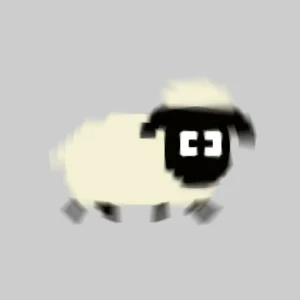 安徽路人假
安徽路人假 -
一、“前肯后否”与“前否后肯”
这是很一般的东西。很简单。例如:
1、The boy likes tennis, doesn"t he?
2、You are a newcomer,aren"t you?
3、He won"t agree with us,will he?
4、They have not gone there,have they?
注:1—2前肯后否,3—4前否后肯。
二、“前否后否”与“前助后助”
下边是一些特殊情况,咱们必须注意它。特殊在哪里呢?它是前否后否,前面是否定,后面是否定。还有一种是前助后助,这个“助”代表的是助动词。
三、“前情后情”与“前情后时”
第三种特殊情况,前情后情,前边是情态动词,后边的反意疑问句要使用同样的情态动词。这个应该比较简单。难点在后边,前情后时,前边是情态动词,后边它不是情态动词,换成一种时态,
 u投在线
u投在线 -
反义疑问句的回答方法和中文习惯很不一样,非常容易出错,这里我来谈一下回答反义疑问句的技巧:
1. 肯定反意疑问句的回答
当陈述部分为否定式,反意疑问句为肯定式时,其回答往往与汉语不一致,需特别引起注意:
"It isn"t cheap, is it?" "Yes, it is." “它不便宜吧?”“不,很便宜。”
"He doesn"t love her, does he?" "No, he doesn"t."“他不爱她,是吗?”“是的,他不爱她。”
2. 否定反意疑问句的回答
当陈述部分为肯定式,反意疑问句为否定式时,其回答一般不会造成困难,一般只需照情况回答即可:
"It"s new, isn"t it?" "Yes, it is." “是新的,对吗?”“对,是新的。”
"He wants to go, doesn"t he?" "No, he doesn"t." “他想去,对吗?”“不,他不想去。”
3. 回答反意疑问句的原则
回答反意疑问句通常应根据实际情况来确定,如有人问你You are asleep, aren"t you? 你应回答No, I"m not. 因为既然你能回答,肯定你还没有asleep。但如果别人问你 You aren"t asleep, are you?(你还没有睡着,对吗),你也只能回答No, I"m not.(是的,还没有睡着),而不能回答为Yes, I"m not. 也不能回答成 Yes, I am.
 北营
北营 -
回答 反意疑问句的回答:前肯后否,前否后肯,根据事实从后往前翻译。如:
(1)They work hard,don"t they?他们努力工作,不是吗?
Yes, they do.对,他们工作努力。/No, they don"t.不,他们工作不努力
(2)They don"t work hard, do they? 他们不太努力工作,是吗?
Yes, they do. 不,他们工作努力。/No, they don"t. 是的, 他们工作不努力
否定反义疑问句的回答
当陈述部分为肯定式,反义疑问句为否定式时,其回答一般不会造成困难,一般只需照情况回答即可:
"It"s new, isn"t it?" "Yes, it is." “是新的,不是吗?”“是,是新的。”
"He wants to go, doesn"t he?" "No, he doesn"t." “他想去,不是吗?”“不,他不想去。”
此时,"Yes"即是,对前面"It"s new."的肯定。
回答反义疑问句的原则
回答反意疑问句通常应根据实际情况来确定,如有人问你You are asleep, aren"t you? 你应回答No, I"m not. 因为既然你能回答,肯定你还没有asleep。但如果别人问你 You aren"t asleep, are you?(你还没有睡着,对吗),你也只能回答No, I"m not.(是的,还没有睡着),而不能回答为Yes, I"m not. 也不能回答成 Yes, I am.
“It is a beautiful flower,isn"t it?” “It isn"t a beautiful flower,is it?”
上述两句句子的回答肯定均为“Yes,it is."否定为“No,it isn"t."
由上述例子可知,反义疑问句回答与句子本身所包含的中文肯定与否的含义并无太大关联,只需注意事实,肯定即用yes,否定用no,无需考虑句子原本是前否后肯或是前肯后否。
建议在答题时,先按照实际写后面的答句,再根据前后一致原则写Yes或No。
口诀
反意疑问并不难,陈述疑问句中含。
前后肯否恰相反,否定词缀不能算。
主谓时态要一致,特殊情况记心田。
实际情况来回答,再把yes和no拣。
综上所述,反义疑问句回答就是按实际情况回答。
对反意疑问句的回答,无论问题的提法如何,如果事实是肯定的,就用yes,事实是否定的,就要用no。要特别注意陈述句部分是否定结构,反意疑问句部分用肯定式提问时,回答yes或no与汉语正好相反。这种省略回答的yes要译成“不”,no要译成“是”。
例:—He likes playing football, doesn"t he? 他喜欢踢足球,是吗?
—Yes, he does. / No, he doesn"t. 是的。/ 不是。
—His sister didn"t attend the meeting, did she? 他妹妹没有参加会议,是吗?
—Yes, she did. / No, she didn"t. 不,她参加了。/ 是的,她没参加。
 gitcloud
gitcloud -
反义疑问句(The Disjunctive Question) 即附加疑问句。它表示提问人的看法,没有把握,需要对方证实。 反义疑问句由两部分组成:前一部分是一个陈述句,后一部分是一个简短的疑问句,两部分的人称时态应保持一致。
陈述部分和疑问部分要么同是肯定的,要么同是否定的。这类反义疑问句有时带有感情色彩,表示惊奇,愤怒,讽刺,不服气等。例如:You call this a day"s work,do you?你说这就叫一天的活儿,是吗?
编辑本段句子结构 1.陈述部分肯定式+疑问部分否定式可记为前肯后否定.
They work hard, don"t they?
2.陈述部分否定式+疑问部分肯定式可记为前否后肯定.
You didn"t go, did you?
句子类型:一种是反义的附加疑问句,一种是非反义的附加疑问句。
简单来说,就是“前肯后否”或“前否后肯”。
读法规则 附加疑问句陈述部分用降调,问句部分可升可降。提问者对陈述部分把握较大时,问句部分用降调;反之用升调。
编辑本段速记方法 前肯后否,前否后肯,前be后be,前无be后加助,时态一致。
编辑本段主语一般词语 附加疑问句中主语用和主句一致的主语,用主格。附加疑问句随从句。
不定代词 当陈述部分的主语是
(1)用one时,后面的疑问句可用one/he.
(2)用no one时,后面附加疑问句中主语用they。
(3)everything,anything,nothing,something时,附加疑问句中主语用it 不用they
(4)this, that,或those, these时,附加疑问句中主语用it或they.
(5)everyone,everybody,someone,somebody,anyone,nobody等,附加疑问句中主语一般用he(书面语)/they(口头语).
(6)不定式,动名词,其他短语,附加疑问句中主语一般用it。
(7)在there be句型中,附加疑问句中主语一般用be/情态动词/助动词+there。
编辑本段反义疑问句的特殊句型否定意义的词 (1)当陈述部分有never,seldom, hardly,few,little,barely, scarcely, nothing,none,rarely ,no, not, no one, nobody, neither等否定意义的词汇时,后面的反意疑问句则为肯定形式:
There are few apples in the basket, are there?
He can hardly swim, can he?
They seldom come late, do they?
(2)当陈述部分的主语为everyone,someone,anyone,no one等表示人的不定代词时,疑问部分的主语用they或he:
Everyone in your family is a teacher, aren"t theyisn"t he?
(3)当陈述部分的主语为everything,something,anything.nothing等表示物的不定代词时,疑问部分的主语用it:
Something is wrong with your watch, isn"t it?
(4)当陈述部分含有否定意思的词是unhappy,dislike,unfriendly,等含有否定词缀的派生词,也就是有un,dis,no-前缀、less-后缀等含有词缀而意思否定的词,当做肯定句处理,疑问部分要用否定形式。如:
He looks unhappy,doesn"t he? 他看上去不高兴,不是吗?
The girl dislikes history,doesn"t she? 这女孩不喜欢历史,不是吗?有less, fewer等词视为肯定词,疑问部分用否定形式。
如:There will be less pollution, won"t there?
表示主语主观意愿的词 含有think, believe, suppose, imagine, expect等动词后接宾语从句构成的主从复合句在构成反意疑问句时,视情况不同有两种不同的构成方式。 (即当主句是I think,I believe,I suppose,I imagine,I expect时要反问从句,其余句式均反问主句。)
(1)当主句的主语为第一人称时,其后的简短问句应与从句相一致。例如:
I expect our English teacher will be back this weekend, won"t she/he?
We suppose you have finished the project, haven"t you?
值得注意的是,当这些动词后接的宾语从句的否定转移到主句时,其仍属否定句,故其后的简短问句应用肯定式,而非否定式。例如:
I don"t believe that he can translate this book, can he?
We don"t imagine the twins have arrived, have they?
此类句子的回答同"前否后肯"型反意疑问句一样,如上述后一个句子,若双胞胎已经到了,则回答为"Yes, they have.";若尚未到达,使用"No, they haven"t."。
(2)当主句的主语为第二、三人称时,其后的简短问句则应与主句相一致(此时,否定只看主句,与从句无关)。例如:
Your sister supposes she needs no help, doesn"t she?
You thought they could have completed the project, didn"t you?
They don"t believe she"s an engineer, do they?
She doesn"t expect that we are coming so soon, does she?
(3)但如果主句的时态是过去时等等,疑问句应和主句的人称时态保持一致。
had better或have 陈述部分有had better,或其中的had表示完成时态时,疑问句应用hadn"t等开头:
You"d better get up early, hadn"t you?
其他情况句中有have时疑问句应用don"t等开头
如have表示“有”的时候,有两种形式:(have 表示有可用do或have来改写)
-He has two sisters,doesn"t he? =He has two sisters, hasn"t he?
-He doesn"t have any sisters,does he?
祈使句 当陈述部分是祈使句时,疑问句要根据语气来表达,分三种情况:
1)一般情况下用will you 或won"t you。
Give me a hand, will you?
Leave all the things as they are, won"t you?
2)以Let"s(听者包括在内)开头的祈使句,前肯后可肯可否,疑问句必须用shall we(shall只用于第一人称);只有以Let us(听话人不被包括在“us”里面)或Let me开头的祈使句,问句才用will you。
Let us know the time of your arrival, will you?
Let"s try again, shall we?
Let me help you, will you?
Let"s have a look on your book,shall we?
3)当陈述句是否定的祈使句时,问句可用will you 或can you 。
e.g. don"t make much noise, will/can you?
There be句型 There be 句型中,反义疑问部分必须为be 动词 + there
There are some apples in the basket, aren"t there?
There isn"t any milk left, is there?
Must .当陈述部分有情态动词must,问句有4种情况:
(1)mustn"t表示“禁止,不可,不必”时,附加问句通常要用must.
You mustn"t stop your car here, must you?
你不能把车停在这地方,知道吗?
(2)must表示“有必要”时,附加问句通常要用needn"t.
They must finish the work today, needn"t they?
他们今天要完成这项工作,是吗?
(3)当must用来表示对现在的情况进行推测时,问句通常要根据must后面的动词采用相应的形式。
He must be good at English, isn"the? 他英语一定学得很好,是吗?
She must be a good English teacher, isn"t she? 她一定是位优秀的英语老师,是吗?
(4)当must have done表示对过去的情况进行推测(一般句中有明确的过去时间状语),问句要根据陈述部分谓语的情况用“didn"t+主语”或“wasn"t/weren"t+主语”;如果强调动作的完成(一般没有明确的过去时间状语),问句要用“haven"t/hasn"t+主语”。
She must have read the novel last week, didn"t she?
她上星期一定读了这本小说,是吗?
You must have told her about it, haven"t you?
你一定把这事告诉她了,是吗?
回答 反意疑问句的回答:前肯后否,前否后肯,根据事实从后往前翻译。如:
(1)They work hard,don"t they?他们努力工作,不是吗?
Yes, they do.对,他们工作努力。/No, they don"t.不,他们工作不努力
(2)They don"t work hard, do they? 他们不太努力工作,是吗?
Yes, they do. 不,他们工作努力。/No, they don"t. 是的, 他们工作不努力
否定反义疑问句的回答 当陈述部分为肯定式,反义疑问句为否定式时,其回答一般不会造成困难,一般只需照情况回答即可:
"It"s new, isn"t it?" "Yes, it is." “是新的,不是吗?”“是,是新的。”
"He wants to go, doesn"t he?" "No, he doesn"t." “他想去,不是吗?”“不,他不想去。”
此时,"Yes"即是,对前面"It"s new."的肯定。
回答反义疑问句的原则 回答反意疑问句通常应根据实际情况来确定,如有人问你You are asleep, aren"t you? 你应回答No, I"m not. 因为既然你能回答,肯定你还没有asleep。但如果别人问你 You aren"t asleep, are you?(你还没有睡着,对吗),你也只能回答No, I"m not.(是的,还没有睡着),而不能回答为Yes, I"m not. 也不能回答成 Yes, I am.
“It is a beautiful flower,isn"t it?” “It isn"t a beautiful flower,is it?”
上述两句句子的回答肯定均为“Yes,it is."否定为“No,it isn"t."
由上述例子可知,反义疑问句回答与句子本身所包含的中文肯定与否的含义并无太大关联,只需注意事实,肯定即用yes,否定用no,无需考虑句子原本是前否后肯或是前肯后否。
建议在答题时,先按照实际写后面的答句,再根据前后一致原则写Yes或No。
口诀
反意疑问并不难,陈述疑问句中含。
前后肯否恰相反,否定词缀不能算。
主谓时态要一致,特殊情况记心田。
实际情况来回答,再把yes和no拣。
综上所述,反义疑问句回答就是按实际情况回答。
对反意疑问句的回答,无论问题的提法如何,如果事实是肯定的,就用yes,事实是否定的,就要用no。要特别注意陈述句部分是否定结构,反意疑问句部分用肯定式提问时,回答yes或no与汉语正好相反。这种省略回答的yes要译成“不”,no要译成“是”。
例:—He likes playing football, doesn"t he? 他喜欢踢足球,是吗?
—Yes, he does. / No, he doesn"t. 是的。/ 不是。
—His sister didn"t attend the meeting, did she? 他妹妹没有参加会议,是吗?
—Yes, she did. / No, she didn"t. 不,她参加了。/ 是的,她没参加。
简要总结反意疑问句19条:
1) 陈述部分的主语是I,疑问部分要用 aren"t I.
I"m as tall as your sister,aren"t I?
2) 陈述部分的谓语是wish,疑问部分要用may +主语。
I wish to have a word with you, may I?
3) 陈述部分用 no, nothing, nobody, never, few, seldom, hardly, rarely, little等否定含义的词时,疑问部分用肯定含义。
The Swede made no answer, did he / she?
Some plants never blown (开花), do they ?
4) 含有ought to 的反意疑问句,陈述部分是肯定的,疑问部分用shouldn"t / oughtn"t +主语。
He ought to know what to do, oughtn"t he? / shouldn"t he?
5) 陈述部分有have to +v. (had to + v.),疑问部分常用don"t +主语(didn"t +主语)。
We have to get there at eight tomorrow, don"t we?
6) 陈述部分的谓语是used to 时,疑问部分用didn"t +主语或 usedn"t +主语。
He used to take pictures there, didn"t he? / usedn"t he?
7) 陈述部分有had better + v. 疑问句部分用hadn"t you?
You"d better read it by yourself, hadn"t you?
8) 陈述部分有would rather +v.,疑问部分多用 wouldn"t +主语。
He would rather read it ten times than recite it, wouldn"t he?
9) 陈述部分有You"d like to +v. 疑问部分用wouldn"t +主语。
You"d like to go with me, wouldn"t you?
10) 陈述部分有must 的疑问句,疑问部分根据实际情况而定。
He must be a doctor, isn"t he?
You must have studied English for three years, haven"t you? / didn"t you?
He must have finished it yesterday, didn"t he?
11) 感叹句中,疑问部分用be +主语。
What colours, aren"t they?
What a smell, isn"t it?
12) 陈述部分由neither… nor, either… or 连接的并列主语时,疑问部分根据其实际逻辑意义而定。
Neither you nor I am engineer, are we?
13) 陈述部分主语是指示代词或不定代词everything, that, nothing, this, 疑问部分主语用it。
Everything is ready, isn"t it?
14)陈述部分为主语从句或并列复合句,疑问部分有三种情况:
a. 并列复合句疑问部分,谓语动词根据邻近从句的谓语而定。
Mr. Smith had been to Beijing for several times, he should have been in China now, shouldn"t he?
b. 带有定语从句,宾语从句的主从复合句,疑问部分谓语根据主句的谓语而定:
He is not the man who gave us a talk, is he?
He said he wanted to visit Japan, didn"t he?
c. 上述部分主句谓语是think, believe, expect, suppose, imagine等引导的定语从句,疑问部分与宾语从句相对应构成反意疑问句。
I don"t think he is bright, is he?
We believe she can do it better, can"t she?
15) 陈述部分主语是不定代词everybody, anyone, somebody, nobody, no one等,疑问部分常用复数they,有时也用单数he。
Everyone knows the answer, don"t they? (does he?)
Nobody knows about it, do they? (does he?)
16) 带情态动词dare或need的反意疑问句,疑问部分常用 need (dare ) +主语。
We need not do it again, need we ?
He dare not say so, dare you?
当dare, need 为实义动词时,疑问部分用助动词do + 主语。
She doesn"t dare to go home alone, does she?
17) 省去主语的祈使句的反意疑问句,疑问部分用will you。
Don"t do that again, will you?
Go with me, will you / won"t you ?
注意: Let"s 开头的祈使句,后用shall we?
Let us 开头的祈使句,后用will you?
Let"s go and listen to the music, shall we?
Let us wait for you in the reading-room, will you ?
18) 陈述部分是"there be"结构的,疑问部分用there省略主语代词。
There is something wrong with your watch, isn"t there?
There will not be any trouble, will there?
19) 否定前缀不能视为否定词,其反意疑问句仍用否定形式。
It is impossible, isn"t it?
He is not unkind to his classmates, is he?
 余辉
余辉 -
反义疑问句(The Disjunctive Question)
即附加疑问句。它表示提问人的看法,没有把握,需要对方证实。
它表示提问人的看法,没有把握,需要对方证实。反义疑问句由两部分组成:前一部分是一个陈述句,后一部分是一个简短的疑问句,两部分的人称时态应保持一致。
1.陈述部分肯定式+疑问部分否定式
2.陈述部分否定式+疑问部分肯定式
They work hare, don"t they?
She was ill yesterday, wasn"t she?
You didn"t go, did you?
He can"t ride a bike, can he?
请注意以下句型的反义疑问句的用法:
1.当陈述部分的主语是I , everyone, everything, nobody 时,后面的疑问句应表示为:
I am a student, aren"t I
Everyone is in the classroom, aren"t they?
Everything begins to grow in spring, doesn"t it?
Nobody will go, will they?
2. 当陈述部分有never,seldom, hardly,few,little,barely, scarcely, nothing 等否定词时,后面的疑问句则表示为:
There are few apples in the basket, are there?
He can hardly swim, can he?
They seldom come late, do they?
3. 当陈述部分是I think 加从句时,疑问句应和从句的人称时态保持一致。
I think chickens can swim, can"t they?
I think Lucy is a good girl, isn"t she?
I didn"t think he was happy, was he?
4. 陈述部分有had better 时,疑问句应用hadn"t开头:
you"d better get up early, hadn"t you?
5.当陈述部分是祈使句时,疑问句要根据语气来表达
Let"s go out for a walk, shall we?
Let us go our for a walk, will you?
Turn on the radio, will you?
6.反义疑问句的回答用yes, no, 但是,当陈述部分是否定形式时,回答要按事实。如:
They don"t work hard, do they? 他们不太努力工作,是吗?
Yes, they do. 不,他们工作努力。/No, they don"t. 对, 他们工作不努力。
 Chen
Chen -
反义疑问句(The Disjunctive Question) 即附加疑问句。它表示提问人的看法,没有把握,需要对方证实。 反义疑问句由两部分组成:前一部分是一个陈述句,后一部分是一个简短的疑问句,两部分的人称时态应保持一致。
1.陈述部分肯定式+疑问部分否定式 可记为 前肯后否 2.陈述部分否定式+疑问部分肯定式 可记为 前否后肯 They work hard, don"t they?
编辑本段主语
一般词语
附加疑问句中主语 用和主句一致的主语,用主格。 附加疑问句随从句。
不定代词
当陈述部分的主语是 ( 1 )用one 时,后面的疑问句可用one/he. (2)everything,anything,nothing,something时, 附加疑问句中主语用it 不用 they (3)this,that,或those,these时,附加疑问句中主语用it和they. (4)everyone,everybody,someone,somebody等,附加疑问句中主语一般用he/they. (5)不定式,动名词,其他短语,附加疑问句中主语一般用it。 (6)在there be句型中,附加疑问句中主语一般用be/情态动词/助动词+there。
编辑本段特殊句型
否定意义的词
否定意义的词 (1)当陈述部分有never,seldom, hardly,few,little,barely, scarcely, nothing 等否定意义的词时,后面的反意疑问句则为肯定形式: There are few apples in the basket, are there? He can hardly swim, can he? They seldom come late, do they? (2)当陈述部分含有否定意思的词是unhappy,dislike,unfriendly等含有否定词缀的派生词,也就是有un-前缀、-less后缀等含有词缀而意思否定的词,当做肯定句处理,疑问部分要用否定形式。如: He looks unhappy,doesn"t he?他看上去不高兴,不是吗? The girl dislikes history,doesn"t she?这女孩不喜欢历史,不是吗?有less,fewer等词视为肯定词,疑问部分用否定形式。如: There will be less pollution, won"t there?
表示主语主观意愿的词
含有think, believe, suppose, imagine, expect等动词后接宾语从句构成的主从复合句在构成反意疑问句时,视情况不同有两种不同的构成方式。 (1.)当主句的主语为第一人称时,其后的简短问句应与从句相一致。例如: I expect our English teacher will be back this weekend, won"t she/he? We suppose you have finished the project, haven"t you? 值得注意的是,当这些动词后接的宾语从句的否定转移到主句时,其仍属否定句,故其后的简短问句应用肯定式,而非否定式。例如: I don"t believe that he can translate this book, can he? Wedon"t imagine the twins have arrived, have they? 此类句子的回答同"前否后肯"型反意疑问句一样,如上述后一个句子,若双胞胎已经到了,则回答为"Yes, they have.";若尚未到达,使用"No, they haven"t."。 (2).当主句的主语为第二、三人称时,其后的简短问句则应与主句相一致(此时,否定只看主句,与从句无关...)。例如: Your sister supposes she needs no help, doesn"t she? You thought they could have completed the project, didn"t you? They don"t believe she"s an engineer, do they? She doesn"t expect that we are coming so soon, does she? (3)但如果主句的时态是过去时等等,疑问句应和主句的人称时态保持一致。
had better或have
陈述部分有had better,或其中的have表示完成时态时,疑问句应用hadn"t等开头: You"d better get up early, hadn"t you? 其他情况句中有have时疑问句应用don"t等开头 如have表示“有”的时候,有两种形式:(have 表示有 可用do或 have来改写) -He has two sisters,doesn"t he? =He has two sisters,hasn"t he? -He doesn"t have any sisters,does he?
祈使句
当陈述部分是祈使句时,疑问句要根据语气来表达,分三种情况: 1)一般情况下用will you 或 won"t you。 e.g. Give me a hand,will you? Leave all the things as they are,won"t you? 2)以Let"s开头的祈使句,疑问句用shall we;以Let us或Let me开头的祈使句,问句用will you。 e.g. Let"s go out for a walk, shall we? Let us go out for a walk, will you? Let me help you,will you? 3)当陈述句是否定的祈使句时,问句可用will you 或 can you 。 e.g. Don"t make much noise,will/can you?
There be句型
There be 句型中,反义疑问部分必须为be 动词 + there There are some apples in the basket, aren"t there? There isn"t any milk left, is there?
must
.当陈述部分有情态动词must,问句有4种情况: (1)mustn"t表示“禁止,不可,不必”时,附加问句通常要用must. You mustn"t stop your car here,must you? 你不能把车停在这地方,知道吗? (2)must表示“有必要”时,附加问句通常要用needn"t. They must finish the work today,needn"t they? 他们今天要完成这项工作,是吗? (3)当must用来表示对现在的情况进行推测时,问句通常要根据must后面的动词采用相应的形式。 He must be good at English,isn"t he? 他英语一定学得很好,是吗? (4)当must+have done表示对过去的情况进行推测(一般句中有明确的过去时间状语),问句要根据陈述部分谓语的情况用“didn"t+主语”或“wasn"t/weren"t+主语”;如果强调动作的完成(一般没有明确的过去时间状语),问句要用“haven"t/hasn"t+主语”。 She must have read the novel last week,didn"t she? 她上星期一定读了这本小说,是吗? You must have told her about it,haven"t you? 你一定把这事告诉她了,是吗?
编辑本段回答
反意疑问句的回答用yes, no, 但是 ,回答翻译相反,回答要按事实。如: (1)They work hard,don"t they?他们努力工作,不是吗? Yes, they do.不,他们工作不努力。/No, they don"t.对,他们工作努力 (2)They don"t work hard, do they? 他们不太努力工作,是吗? Yes, they do. 不,他们工作努力。/No, they don"t. 对, 他们工作不努力
肯定反义疑问句的回答
当陈述部分为否定式,反意疑问句为肯定式时,其回答往往与汉语不一致,需特别引起注意: "It isn"t cheap, is it?" "Yes, it is." “它不便宜吧?”“不,很便宜。” "He doesn"t love her, does he?" "No, he doesn"t."“他不爱她,是吗?”“是的,他不爱她。” 此时,"Yes"即不,对前面"It isn"t cheap."的否定。
否定反意疑问句的回答
当陈述部分为肯定式,反义疑问句为否定式时,其回答一般不会造成困难,一般只需照情况回答即可: "It"s new, isn"t it?" "Yes, it is." “是新的,对吗?”“对,是新的。” "He wants to go, doesn"t he?" "No, he doesn"t." “他想去,对吗?”“不,他不想去。” 此时,"Yes"即是,对前面"It"s new."的肯定。
回答反意疑问句的原则
回答反意疑问句通常应根据实际情况来确定,如有人问你You are asleep, aren"t you? 你应回答No, I"m not. 因为既然你能回答,肯定你还没有asleep。但如果别人问你 You aren"t asleep, are you?(你还没有睡着,对吗),你也只能回答No, I"m not.(是的,还没有睡着),而不能回答为Yes, I"m not. 也不能回答成 Yes, I am. “It is a beautiful flower,isn"t it?” “It isn"t a beautiful flower,is it?” 上述两句句子的回答肯定均为“Yes,it is."否定为“No,it isn"t." 由上述例子可知,反义疑问句回答与句子本身所包含的中文肯定与否的含义并无太大关联,只需注意事实,肯定即用yes,否定用no,无需考虑句子原本是前否后肯或是前肯后否。
编辑本段重点归纳
快速记忆表 陈述部分的谓语 疑问部分
I aren"t I/are I
no,nothing,nobody,never,
few, seldom, hardly,
rarely, little等否定含义的词 肯定含义
ought to(肯定的) shouldn"t/ oughtn"t +主语
have to+v.(had to+v.) don"t +主语(didn"t +主语)
used to didn"t +主语或 usedn"t +主语
had better + v. hadn"t you
would rather + v. wouldn"t +主语
you"d like to + v. wouldn"t +主语
must 根据实际情况而定
感叹句 be +主语
指示代词或不定代词
everything,that,
nothing,this 主语用it
并列复合句 谓语根据邻近从句的谓语而定
定语从句,宾语从句
主从复合句 根据主句的谓语而定
think,believe,expect,
suppose,imagine等引导 与宾语从句相对应的从句
everybody,anyone,somebody,nobody,no one 复数they, 单数he
情态动词dare或need need/needn"t (dare/daren"t ) +主语
dare, need 为实义动词 do/don"t +主语
省去主语的祈使句 will/won"t you?
Let"s 开头的祈使句 Shall we?
Let us 开头的祈使句 Will you?
there be 相应的谓语动词+there(省略主语代词)
否定前缀不能视为否定词 仍用否定形式
 黑桃花
黑桃花 -
【反义疑问句】(The Disjunctive Question)又叫附加疑问句。
它表示提问人的看法,没有把握,需要对方证实。
反义疑问句由两部分组成:前一部分是一个陈述句,后一部分是一个简短的疑问句,两部分的人称时态应保持一致。
1. 陈述部分肯定式,疑问部分否定式 ?
如:She was ill yesterday, wasn"t she?
2. 陈述部分否定式(或有never,seldom, hardly,few,little,barely, scarcely, nothing 等否定词时),疑问部分肯定式 ?
如:You didn"t go, did you?
He can hardly swim, can he?
They seldom come late, do they?
——【 反义疑问句的回答】
用yes, no, 但是,当陈述部分是否定形式时,回答要按事实。
如: They don"t work hard, do they? 他们不太努力工作,是吗?
——Yes, they do. 不, 他们工作努力。
——No, they don"t. 对, 他们工作不努力。
 tt白
tt白 -
反义疑问句(The Disjunctive Question)又叫附加疑问句。它表示提问人的看法,没有把握,需要对方证实。反义疑问句由两部分组成:前一部分是一个陈述句,后一部分是一个简短的疑问句,两部分的人称时态应保持一致。
1. 陈述部分肯定式+疑问部分否定式
2. 陈述部分否定式+疑问部分肯定式
They work hare, don"t they?
She was ill yesterday, wasn"t she?
You didn"t go, did you?
He can"t ride a bike, can he?
请注意以下句型的反义疑问句的用法:
1. 当陈述部分的主语是I , everyone, everything, nobody 时,后面的疑问句应表示为:
I am a student, aren"t I
Everyone is in the classroom, aren"t they?
Everything begins to grow in spring, doesn"t it?
Nobody will go, will they?
2. 当陈述部分有never,seldom, hardly,few,little,barely, scarcely, nothing 等否定词时,后面的疑问句则表示为:
There are few apples in the basket, are there?
He can hardly swim, can he?
They seldom come late, do they?
3. 当陈述部分是I think 加从句时,疑问句应和从句的人称时态保持一致。
I think chickens can swim, can"t they?
I think Lucy is a good girl, isn"t she?
I didn"t think he was happy, was he?
4. 陈述部分有had better 时,疑问句应用hadn"t开头:
you"d better get up early, hadn"t you?
5. 当陈述部分是祈使句时,疑问句要根据语气来表达:
Let"s go out for a walk, shall we?
Let us go our for a walk, will you?
Turn on the radio, will you?
6. 反义疑问句的回答用yes, no, 但是,当陈述部分是否定形式时,回答要按事实。如:
They don"t work hard, do they? 他们不太努力工作,是吗?
Yes, they do. 不, 他们工作努力。/No, they don"t. 对, 他们工作不努力。
 CarieVinne
CarieVinne -
1) 陈述部分的主语是I,疑问部分要用 aren"t I.
I"m as tall as your sister,aren"t I?
2) 陈述部分的谓语是wish,疑问部分要用may +主语。
I wish to have a word with you, may I?
3) 陈述部分用 no, nothing, nobody, never, few, seldom, hardly, rarely, little等否定含义的词时,疑问部分用肯定含义。
The Swede made no answer, did he / she?
Some plants never blown (开花), do they ?
4) 含有ought to 的反意疑问句,陈述部分是肯定的,疑问部分用shouldn"t / oughtn"t +主语。
He ought to know what to do, oughtn"t he? / shouldn"t he?
5) 陈述部分有have to +v. (had to + v.),疑问部分常用don"t +主语(didn"t +主语)。
We have to get there at eight tomorrow, don"t we?
6) 陈述部分的谓语是used to 时,疑问部分用didn"t +主语或 usedn"t +主语。
He used to take pictures there, didn"t he? / usedn"t he?
7) 陈述部分有had better + v. 疑问句部分用hadn"t you?
You"d better read it by yourself, hadn"t you?
8) 陈述部分有would rather +v.,疑问部分多用 wouldn"t +主语。
He would rather read it ten times than recite it, wouldn"t he?
9) 陈述部分有You"d like to +v. 疑问部分用wouldn"t +主语。
You"d like to go with me, wouldn"t you?
10) 陈述部分有must 的疑问句,疑问部分根据实际情况而定。
He must be a doctor, isn"t he?
You must have studied English for three years, haven"t you? / didn"t you?
He must have finished it yesterday, didn"t he?
11) 感叹句中,疑问部分用be +主语。
What colours, aren"t they?
What a smell, isn"t it?
12) 陈述部分由neither… nor, either… or 连接的并列主语时,疑问部分根据其实际逻辑意义而定。
Neither you nor I am engineer, are we?
13) 陈述部分主语是指示代词或不定代词everything, that, nothing, this, 疑问部分主语用it。
Everything is ready, isn"t it?
14) 陈述部分为主语从句或并列复合句,疑问部分有三种情况:
a. 并列复合句疑问部分,谓语动词根据邻近从句的谓语而定。
Mr. Smith had been to Beijing for several times, he should have been in China now, shouldn"t he?
b. 带有定语从句,宾语从句的主从复合句,疑问部分谓语根据主句的谓语而定:
He is not the man who gave us a talk, is he?
He said he wanted to visit Japan, didn"t he?
c. 上述部分主句谓语是think, believe, expect, suppose, imagine等引导的定语从句,疑问部分与宾语从句相对应构成反意疑问句。
I don"t think he is bright, is he?
We believe she can do it better, can"t she?
15) 陈述部分主语是不定代词everybody, anyone, somebody, nobody, no one等,疑问部分常用复数they,有时也用单数he。
Everyone knows the answer, don"t they? (does he?)
Nobody knows about it, do they? (does he?)
16) 带情态动词dare或need的反意疑问句,疑问部分常用 need (dare ) +主语。
We need not do it again, need we ?
He dare not say so, dare you?
当dare, need 为实义动词时,疑问部分用助动词do + 主语。
She doesn"t dare to go home alone, does she?
17) 省去主语的祈使句的反意疑问句,疑问部分用will you。
Don"t do that again, will you?
Go with me, will you / won"t you ?
注意: Let"s 开头的祈使句,后用shall we?
Let us 开头的祈使句,后用will you?
Let"s go and listen to the music, shall we?
Let us wait for you in the reading-room, will you ?
18) 陈述部分是"there be"结构的,疑问部分用there省略主语代词。
There is something wrong with your watch, isn"t there?
There will not be any trouble, will there?
19) 否定前缀不能视为否定词,其反意疑问句仍用否定形式。
It is impossible, isn"t it?
He is not unkind to his classmates, is he?
20)must在表"推测"时,根据其推测的情况来确定反意疑问句。
He must be there now, isn"t he?
It must be going to rain tomorrow, won"t it?
快速记忆表
陈述部分的谓语 疑问部分
I aren"t I
Wish may +主语
no,nothing,nobody,never,few, seldom, hardly,rarely, little等否定含义的词 肯定含义
ought to(肯定的) shouldn"t/ oughtn"t +主语
have to+v.(had to+v.) don"t +主语(didn"t +主语)
used to didn"t +主语或 usedn"t +主语
had better + v. hadn"t you
would rather + v. wouldn"t +主语
you"d like to + v. wouldn"t +主语
must 根据实际情况而定
感叹句中 be +主语
Neither…nor, either…or 根据其实际逻辑意义而定
指示代词或不定代词everything,that,nothing,this 主语用it
并列复合句 谓语根据邻近从句的谓语而定
定语从句,宾语从句的主从复合句 谓语根据邻近从句的谓语而定
主从复合句 根据主句的谓语而定
think,believe,expect,suppose,imagine等引导 与宾语从句相对应的从句
everybody,anyone,somebody,nobody,no one 复数they, 单数he
情态动词dare或need need (dare ) +主语
dare, need 为实义动词 do +主语
省去主语的祈使句 will you?
Let"s 开头的祈使句 Shall we?
Let us 开头的祈使句 Will you?
there be 相应的谓语动词+there(省略主语代词)
否定前缀不能视为否定词 仍用否定形式
回答:
反意疑问句是在陈述句后边加上一个简短问句,对陈述句所叙述的内容提出相反的疑问,这种句子就叫作反意疑问句。反意疑问句可以表示真实的疑问,也可以表示提问人的倾向、强调或反问。如果陈述句是肯定句时,后边的反意疑问句通常要用否定式;反之,如果陈述句是否定句时,后边的反意疑问句通常要用肯定式。陈述句和后边的反意疑问句的主语以及谓语动词的人称、数、时态通常要保持一致。例如:
He speaks English, doesn"t he?
Mary won"t do it, will she?
Lies cannot cover up the facts, can they?
回答反意疑问句和回答一般疑问句一样,肯定回答用"Yes, +肯定结构";否定回答用"No, +否定结构"。这与汉语习惯有所不同。例如:
-He"s a doctor, isn"t he?他是医生,对吧?
-Yes, he is.对,他是医生。(No, he isn"t.不,他不是医生。)
-He isn"t a doctor, is he?他不是医生,对吧?
-Yes, he is.不,他是医生。(No, he isn"t.对,他不是医生。)
 苏萦
苏萦 -
快速记忆表 陈述部分的谓语 疑问部分
I aren"t I/are I
no,nothing,nobody,never,
few, seldom, hardly,
rarely, little等否定含义的词 肯定含义
ought to(肯定的) shouldn"t/ oughtn"t +主语
have to+v.(had to+v.) don"t +主语(didn"t +主语)
used to didn"t +主语或 usedn"t +主语
had better + v. hadn"t you
would rather + v. wouldn"t +主语
you"d like to + v. wouldn"t +主语
must 根据实际情况而定
感叹句 be +主语
指示代词或不定代词
everything,that,
nothing,this 主语用it
并列复合句 谓语根据邻近从句的谓语而定
定语从句,宾语从句
主从复合句 根据主句的谓语而定
think,believe,expect,
suppose,imagine等引导 与宾语从句相对应的从句
everybody,anyone,somebody,nobody,no one 复数they, 单数he
情态动词dare或need need/needn"t (dare/daren"t ) +主语
dare, need 为实义动词 do/don"t +主语
省去主语的祈使句 will/won"t you?
Let"s 开头的祈使句 Shall we?
Let us 开头的祈使句 Will you?
there be 相应的谓语动词+there(省略主语代词)
否定前缀不能视为否定词 仍用否定形式
 阿里阿涅德
阿里阿涅德 -
反义疑问句(The Disjunctive Question) 即附加疑问句。它表示提问人的看法,没有把握,需要对方证实。 反义疑问句由两部分组成:前一部分是一个陈述句,后一部分是一个简短的疑问句,两部分的人称时态应保持一致。
1.陈述部分肯定式+疑问部分否定式 可记为 前肯后否 2.陈述部分否定式+疑问部分肯定式 可记为 前否后肯 They work hard, don"t they?
编辑本段主语
一般词语
附加疑问句中主语 用和主句一致的主语,用主格。 附加疑问句随从句。
不定代词
当陈述部分的主语是 ( 1 )用one 时,后面的疑问句可用one/he. (2)everything,anything,nothing,something时, 附加疑问句中主语用it 不用 they (3)this,that,或those,these时,附加疑问句中主语用it和they. (4)everyone,everybody,someone,somebody等,附加疑问句中主语一般用he/they. (5)不定式,动名词,其他短语,附加疑问句中主语一般用it。 (6)在there be句型中,附加疑问句中主语一般用be/情态动词/助动词+there。
编辑本段特殊句型
否定意义的词
否定意义的词 (1)当陈述部分有never,seldom, hardly,few,little,barely, scarcely, nothing 等否定意义的词时,后面的反意疑问句则为肯定形式: There are few apples in the basket, are there? He can hardly swim, can he? They seldom come late, do they? (2)当陈述部分含有否定意思的词是unhappy,dislike,unfriendly等含有否定词缀的派生词,也就是有un-前缀、-less后缀等含有词缀而意思否定的词,当做肯定句处理,疑问部分要用否定形式。如: He looks unhappy,doesn"t he?他看上去不高兴,不是吗? The girl dislikes history,doesn"t she?这女孩不喜欢历史,不是吗?有less,fewer等词视为肯定词,疑问部分用否定形式。如: There will be less pollution, won"t there?
表示主语主观意愿的词
含有think, believe, suppose, imagine, expect等动词后接宾语从句构成的主从复合句在构成反意疑问句时,视情况不同有两种不同的构成方式。 (1.)当主句的主语为第一人称时,其后的简短问句应与从句相一致。例如: I expect our English teacher will be back this weekend, won"t she/he? We suppose you have finished the project, haven"t you? 值得注意的是,当这些动词后接的宾语从句的否定转移到主句时,其仍属否定句,故其后的简短问句应用肯定式,而非否定式。例如: I don"t believe that he can translate this book, can he? Wedon"t imagine the twins have arrived, have they? 此类句子的回答同"前否后肯"型反意疑问句一样,如上述后一个句子,若双胞胎已经到了,则回答为"Yes, they have.";若尚未到达,使用"No, they haven"t."。 (2).当主句的主语为第二、三人称时,其后的简短问句则应与主句相一致(此时,否定只看主句,与从句无关...)。例如: Your sister supposes she needs no help, doesn"t she? You thought they could have completed the project, didn"t you? They don"t believe she"s an engineer, do they? She doesn"t expect that we are coming so soon, does she? (3)但如果主句的时态是过去时等等,疑问句应和主句的人称时态保持一致。
had better或have
陈述部分有had better,或其中的have表示完成时态时,疑问句应用hadn"t等开头: You"d better get up early, hadn"t you? 其他情况句中有have时疑问句应用don"t等开头 如have表示“有”的时候,有两种形式:(have 表示有 可用do或 have来改写) -He has two sisters,doesn"t he? =He has two sisters,hasn"t he? -He doesn"t have any sisters,does he?
祈使句
当陈述部分是祈使句时,疑问句要根据语气来表达,分三种情况: 1)一般情况下用will you 或 won"t you。 e.g. Give me a hand,will you? Leave all the things as they are,won"t you? 2)以Let"s开头的祈使句,疑问句用shall we;以Let us或Let me开头的祈使句,问句用will you。 e.g. Let"s go out for a walk, shall we? Let us go out for a walk, will you? Let me help you,will you? 3)当陈述句是否定的祈使句时,问句可用will you 或 can you 。 e.g. Don"t make much noise,will/can you?
There be句型
There be 句型中,反义疑问部分必须为be 动词 + there There are some apples in the basket, aren"t there? There isn"t any milk left, is there?
must
.当陈述部分有情态动词must,问句有4种情况: (1)mustn"t表示“禁止,不可,不必”时,附加问句通常要用must. You mustn"t stop your car here,must you? 你不能把车停在这地方,知道吗? (2)must表示“有必要”时,附加问句通常要用needn"t. They must finish the work today,needn"t they? 他们今天要完成这项工作,是吗? (3)当must用来表示对现在的情况进行推测时,问句通常要根据must后面的动词采用相应的形式。 He must be good at English,isn"t he? 他英语一定学得很好,是吗? (4)当must+have done表示对过去的情况进行推测(一般句中有明确的过去时间状语),问句要根据陈述部分谓语的情况用“didn"t+主语”或“wasn"t/weren"t+主语”;如果强调动作的完成(一般没有明确的过去时间状语),问句要用“haven"t/hasn"t+主语”。 She must have read the novel last week,didn"t she? 她上星期一定读了这本小说,是吗? You must have told her about it,haven"t you? 你一定把这事告诉她了,是吗?
编辑本段回答
反意疑问句的回答用yes, no, 但是 ,回答翻译相反,回答要按事实。如: (1)They work hard,don"t they?他们努力工作,不是吗? Yes, they do.不,他们工作不努力。/No, they don"t.对,他们工作努力 (2)They don"t work hard, do they? 他们不太努力工作,是吗? Yes, they do. 不,他们工作努力。/No, they don"t. 对, 他们工作不努力
肯定反义疑问句的回答
当陈述部分为否定式,反意疑问句为肯定式时,其回答往往与汉语不一致,需特别引起注意: "It isn"t cheap, is it?" "Yes, it is." “它不便宜吧?”“不,很便宜。” "He doesn"t love her, does he?" "No, he doesn"t."“他不爱她,是吗?”“是的,他不爱她。” 此时,"Yes"即不,对前面"It isn"t cheap."的否定。
否定反意疑问句的回答
当陈述部分为肯定式,反义疑问句为否定式时,其回答一般不会造成困难,一般只需照情况回答即可: "It"s new, isn"t it?" "Yes, it is." “是新的,对吗?”“对,是新的。” "He wants to go, doesn"t he?" "No, he doesn"t." “他想去,对吗?”“不,他不想去。” 此时,"Yes"即是,对前面"It"s new."的肯定。
回答反意疑问句的原则
回答反意疑问句通常应根据实际情况来确定,如有人问你You are asleep, aren"t you? 你应回答No, I"m not. 因为既然你能回答,肯定你还没有asleep。但如果别人问你 You aren"t asleep, are you?(你还没有睡着,对吗),你也只能回答No, I"m not.(是的,还没有睡着),而不能回答为Yes, I"m not. 也不能回答成 Yes, I am. “It is a beautiful flower,isn"t it?” “It isn"t a beautiful flower,is it?” 上述两句句子的回答肯定均为“Yes,it is."否定为“No,it isn"t." 由上述例子可知,反义疑问句回答与句子本身所包含的中文肯定与否的含义并无太大关联,只需注意事实,肯定即用yes,否定用no,无需考虑句子原本是前否后肯或是前肯后否。
编辑本段重点归纳
快速记忆表 陈述部分的谓语 疑问部分
I aren"t I/are I
no,nothing,nobody,never,
few, seldom, hardly,
rarely, little等否定含义的词 肯定含义
ought to(肯定的) shouldn"t/ oughtn"t +主语
have to+v.(had to+v.) don"t +主语(didn"t +主语)
used to didn"t +主语或 usedn"t +主语
had better + v. hadn"t you
would rather + v. wouldn"t +主语
you"d like to + v. wouldn"t +主语
must 根据实际情况而定
感叹句 be +主语
指示代词或不定代词
everything,that,
nothing,this 主语用it
并列复合句 谓语根据邻近从句的谓语而定
定语从句,宾语从句
主从复合句 根据主句的谓语而定
think,believe,expect,
suppose,imagine等引导 与宾语从句相对应的从句
everybody,anyone,somebody,nobody,no one 复数they, 单数he
情态动词dare或need need/needn"t (dare/daren"t ) +主语
dare, need 为实义动词 do/don"t +主语
省去主语的祈使句 will/won"t you?
Let"s 开头的祈使句 Shall we?
Let us 开头的祈使句 Will you?
there be 相应的谓语动词+there(省略主语代词)
否定前缀不能视为否定词 仍用否定形式
 血莲丿红尘
血莲丿红尘 -
1) 陈述部分的主语是I,疑问部分要用 aren"t I.
I"m as tall as your sister,aren"t I?
2) 陈述部分的谓语是wish,疑问部分要用may +主语。
I wish to have a word with you, may I?
3) 陈述部分用 no, nothing, nobody, never, few, seldom, hardly, rarely, little等否定含义的词时,疑问部分用肯定含义。
The Swede made no answer, did he / she?
Some plants never blown (开花), do they ?
4) 含有ought to 的反意疑问句,陈述部分是肯定的,疑问部分用shouldn"t / oughtn"t +主语。
He ought to know what to do, oughtn"t he? / shouldn"t he?
5) 陈述部分有have to +v. (had to + v.),疑问部分常用don"t +主语(didn"t +主语)。
We have to get there at eight tomorrow, don"t we?
6) 陈述部分的谓语是used to 时,疑问部分用didn"t +主语或 usedn"t +主语。
He used to take pictures there, didn"t he? / usedn"t he?
7) 陈述部分有had better + v. 疑问句部分用hadn"t you?
You"d better read it by yourself, hadn"t you?
8) 陈述部分有would rather +v.,疑问部分多用 wouldn"t +主语。
He would rather read it ten times than recite it, wouldn"t he?
9) 陈述部分有You"d like to +v. 疑问部分用wouldn"t +主语。
You"d like to go with me, wouldn"t you?
10) 陈述部分有must 的疑问句,疑问部分根据实际情况而定。
He must be a doctor, isn"t he?
You must have studied English for three years, haven"t you? / didn"t you?
He must have finished it yesterday, didn"t he?
 CPS小天才
CPS小天才 -
中学英语语法难点解析-反意疑问
1) 陈述部分的主语是I,疑问部分要用 aren"t I.
I"m as tall as your sister,aren"t I?
2) 陈述部分的谓语是wish,疑问部分要用may +主语。
I wish to have a word with you, may I?
3) 陈述部分用 no, nothing, nobody, never, few, seldom, hardly, rarely, little等否定含义的词时,疑问部分用肯定含义。
The Swede made no answer, did he / she?
Some plants never blown (开花), do they ?
4) 含有ought to 的反意疑问句,陈述部分是肯定的,疑问部分用shouldn"t / oughtn"t +主语。
He ought to know what to do, oughtn"t he? / shouldn"t he?
5) 陈述部分有have to +v. (had to + v.),疑问部分常用don"t +主语(didn"t +主语)。
We have to get there at eight tomorrow, don"t we?
6) 陈述部分的谓语是used to 时,疑问部分用didn"t +主语或 usedn"t +主语。
He used to take pictures there, didn"t he? / usedn"t he?
7) 陈述部分有had better + v. 疑问句部分用hadn"t you?
You"d better read it by yourself, hadn"t you?
8) 陈述部分有would rather +v.,疑问部分多用 wouldn"t +主语。
He would rather read it ten times than recite it, wouldn"t he?
9) 陈述部分有You"d like to +v. 疑问部分用wouldn"t +主语。
You"d like to go with me, wouldn"t you?
10) 陈述部分有must 的疑问句,疑问部分根据实际情况而定。
He must be a doctor, isn"t he?
You must have studied English for three years, haven"t you? / didn"t you?
He must have finished it yesterday, didn"t he?
11) 感叹句中,疑问部分用be +主语。
What colours, aren"t they?
What a smell, isn"t it?
12) 陈述部分由neither… nor, either… or 连接的并列主语时,疑问部分根据其实际逻辑意义而定。
Neither you nor I am engineer, are we?
13) 陈述部分主语是指示代词或不定代词everything, that, nothing, this, 疑问部分主语用it。
Everything is ready, isn"t it?
14) 陈述部分为主语从句或并列复合句,疑问部分有三种情况:
a. 并列复合句疑问部分,谓语动词根据邻近从句的谓语而定。
Mr. Smith had been to Beijing for several times, he should have been in China now, shouldn"t he?
b. 带有定语从句,宾语从句的主从复合句,疑问部分谓语根据主句的谓语而定:
He is not the man who gave us a talk, is he?
He said he wanted to visit Japan, didn"t he?
c. 上述部分主句谓语是think, believe, expect, suppose, imagine等引导的定语从句,疑问部分与宾语从句相对应构成反意疑问句。
I don"t think he is bright, is he?
We believe she can do it better, can"t she?
15) 陈述部分主语是不定代词everybody, anyone, somebody, nobody, no one等,疑问部分常用复数they,有时也用单数he。
Everyone knows the answer, don"t they? (does he?)
Nobody knows about it, do they? (does he?)
16) 带情态动词dare或need的反意疑问句,疑问部分常用 need (dare ) +主语。
We need not do it again, need we ?
He dare not say so, dare you?
当dare, need 为实义动词时,疑问部分用助动词do + 主语。
She doesn"t dare to go home alone, does she?
17) 省去主语的祈使句的反意疑问句,疑问部分用will you。
Don"t do that again, will you?
Go with me, will you / won"t you ?
注意: Let"s 开头的祈使句,后用shall we?
Let us 开头的祈使句,后用will you?
Let"s go and listen to the music, shall we?
Let us wait for you in the reading-room, will you ?
18) 陈述部分是"there be"结构的,疑问部分用there省略主语代词。
There is something wrong with your watch, isn"t there?
There will not be any trouble, will there?
19) 否定前缀不能视为否定词,其反意疑问句仍用否定形式。
It is impossible, isn"t it?
He is not unkind to his classmates, is he?
20)must在表"推测"时,根据其推测的情况来确定反意疑问句。
He must be there now, isn"t he?
It must be going to rain tomorrow, won"t it?
快速记忆表
陈述部分的谓语 疑问部分
I aren"t I
Wish may +主语
no,nothing,nobody,never,few, seldom, hardly,rarely, little等否定含义的词 肯定含义
ought to(肯定的) shouldn"t/ oughtn"t +主语
have to+v.(had to+v.) don"t +主语(didn"t +主语)
used to didn"t +主语或 usedn"t +主语
had better + v. hadn"t you
would rather + v. wouldn"t +主语
you"d like to + v. wouldn"t +主语
must 根据实际情况而定
感叹句中 be +主语
Neither…nor, either…or 根据其实际逻辑意义而定
指示代词或不定代词everything,that,nothing,this 主语用it
并列复合句 谓语根据邻近从句的谓语而定
定语从句,宾语从句的主从复合句 谓语根据邻近从句的谓语而定
主从复合句 根据主句的谓语而定
think,believe,expect,suppose,imagine等引导 与宾语从句相对应的从句
everybody,anyone,somebody,nobody,no one 复数they, 单数he
情态动词dare或need need (dare ) +主语
dare, need 为实义动词 do +主语
省去主语的祈使句 will you?
Let"s 开头的祈使句 Shall we?
Let us 开头的祈使句 Will you?
there be 相应的谓语动词+there(省略主语代词)
否定前缀不能视为否定词 仍用否定形式
 左迁
左迁 -
根据实际情况回答
根据实际情况回答
例如:
一."前肯后否"型句式
He is a student,isn"t he?(他是一个学生,不是吗?)
Yes,he is.(是的,他是.) / No,he isn"t.(不,他不是.)
She likes apples,doesn"t she?(她喜欢苹果,不是吗?)
Yes,she does.(是的,她喜欢.) /No,she doesn"t.(不,她不喜欢.)
二."前否后肯"型句式
He isn"t a student,is he?(他不是一个学生,对吗?)
Yes,he is.(不,他是.)/ No,he isn"t.(对,他不是.)
She doesn"t like apples,does she?(她不喜欢苹果,对吗?)
Yes,she does.(不,她喜欢.) /No,she doesn"t.isn"t.(对,她不喜欢.)
